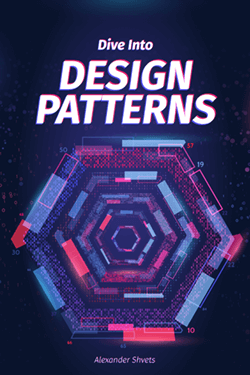Abstract Factory Design Pattern in Delphi
Applications in Delphi
This pattern is ideal where you want to isolate your application from the implementation of the concrete classes. For example if you wanted to overlay Delphi's VCL with a common VCL layer for both 16 and 32 bit applications, you might start with the abstract factory as a base.
Implementation Example
The following example uses an abstract factory and two concrete factory classes to implement different styles of user interface components. TOAbstractFactory is a singleton class, since we usually want one factory to be used for the whole application.
TOAbstractFactory = class(TObject)
public
constructor Create;
destructor Destroy; override;
//abstract widget constructors
function CreateSpeedButton(AOwner: TComponent): TSpeedButton; virtual; abstract;
function CreateEdit(AOwner: TComponent): TEdit; virtual; abstract;
function CreateLabel(AOwner: TComponent): TLabel; virtual; abstract;
end;
TORedFactory and TOBlueFactory override the abstract interface to support different widget styles.
TORedFactory = class(TOAbstractFactory)
public
//concrete widget constructors
function CreateSpeedButton(AOwner: TComponent): TSpeedButton; override;
function CreateEdit(AOwner: TComponent): TEdit; override;
function CreateLabel(AOwner: TComponent): TLabel; override;
end;
TOBlueFactory = class(TOAbstractFactory)
public
//concrete widget constructors
function CreateSpeedButton(AOwner: TComponent): TSpeedButton; override;
function CreateEdit(AOwner: TComponent): TEdit; override;
function CreateLabel(AOwner: TComponent): TLabel; override;
end;
At runtime, our client application instantiates the abstract factory with a concrete class and then uses the abstract interface. Parts of the client application that use the factory don't need to know which concrete class is actually in use.
